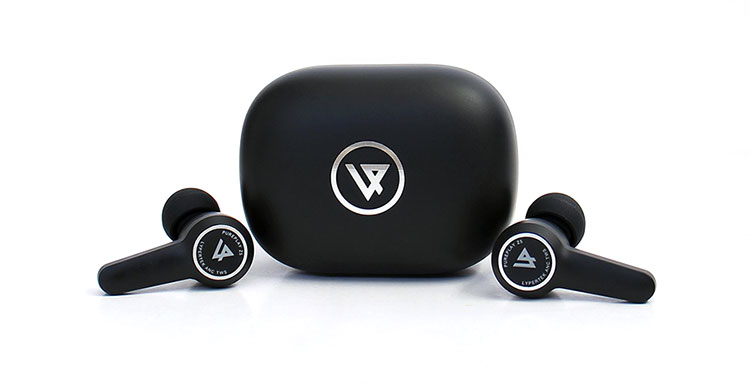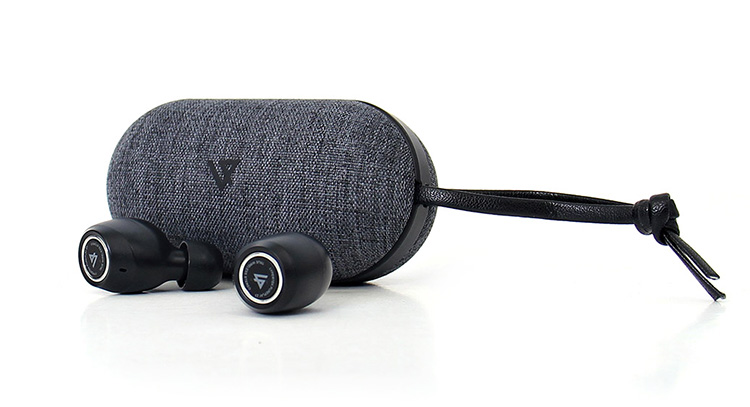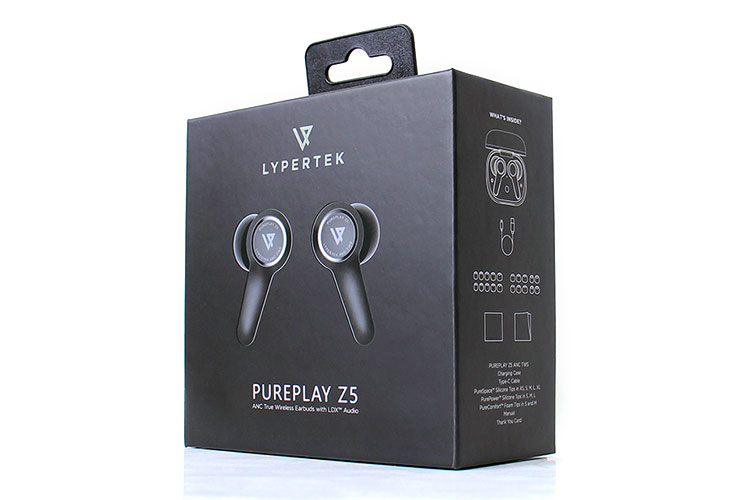Sound Impressions
Summary
The Z5 has the typical Lypertek punchy but is somewhat close to neutral in general tuning. A slightly fun-sounding U or V shape comes to mind but they still try to remain close to flat since the top and bottom are only slightly emphasized and not overly so.
Bass seems to be most prominent but it’s not pushed over the line, too bloated, or too thick. The bass response does seem a touch more prominent when the ANC is on but not by much so the ANC does affect the sound quality. Because of that, I did most of the listening with the ANC feature turned off.
The low-end bump is around the 80 Hz area and that pushes the bass forward and adds some bass presence and color but the bass does not bloat into the midrange section, fortunately. Since the hump is a small one it doesn’t expand into other frequency bands.
The midrange is rather balanced but with a bright presence that seems to portray a more ardent presentation with an intimate character. The treble response is okay and sounds clean enough but at high volume, you could hear some rasp but it’s probably due to the Bluetooth codec limitation since the highest you could run is aptX adaptive.
Overall the sound is acceptably clean, dynamic, and enjoyable. I would say equivalent in sound quality to some similarly costing IEMs but since these are completely wireless, include the electronics plus rechargeable batteries, and all this in combination puts these in a high value for dollar category.
Staging
Okay, the Z5 is not an imaging-geared IEM nor is it extremely wide in portraying the staging and remains somewhat intimate. I think imaging is done better than placement or 3d positioning.
The most lacking aspect is the depth but the width is medium sized. Some height is portrayed but the soundstage becomes more focused when you activate the ANC feature which I found odd. It seems Lypertek tuned the Z5 to sound best with the ANC feature on.
Wireless Performance
Pairing
I had a couple of occasions in which the Lypertek Z5 failed to pair up completely. For example, I had some times when I found the right channel, in particular, to be silent while the left took on a full-range sound and the only correction to the issue was to start the pairing process over again from the beginning.
The pairing sequence starts once you open the cradle door so it wasn’t that I pulled one earbud out before the other and I did notice the issue was more prominent using my BTA30.
It states on the specification sheet that this set has mirroring technology but I think it needs a small tweak and I think that is where the issue lies. In the end, resetting the initial pairing a couple of times seemed to sort things out.
Stability and Range
If you feed the Z5 a 5.2 BT signal expect some really good long-range reception. I got past 45 feet with a 5.0 signal and was able to roam my house and into any room with no dropouts which is excellent.
I do a rather primitive test with Bluetooth devices and the test is to go on the other side of a metal screen door in front of my house. Most TWS present disconnect issues when I do so but the Z5 maintained a solid connection so they passed my primitive test with a good grade.
Latency
I did notice a slight delay but it was the average 0.2 seconds that is common to Bluetooth technology today except for some units I’ve tested that come equipped with a gaming mode feature. Those are the best for movie-watching and, of course, gaming.
While listening to music latency is irrelevant and while on a phone conversation a 0.2-second delay will not render a conversation unlistenable. So although the Z5 are not the best at latency I would not consider their performance in this area a deal-breaker either.
Select Comparisons
Lypertek PurePlay Z3 V2.0
$99
Technical
Although these two come from the same Lypertek PurePlay lineup there are many differences between them and one of the most apparent differences is the earbud style. Two other features can also be identified in particular, the addition of ANC on the Z5 and the touch control feature which replaced the Z3 push button.
Both these TWS models can do AAC, SBC, and aptX but only the Z5 mentions a capacity to decode adaptive aptX. The Z3 uses a QCC3040 5.2 Bluetooth chip but I think the QCC3046 is a notch above which includes the adaptive 24-bit codec.
Design
At times I appreciate the push-button design a bit more and sometimes prefer it to a touch control system that on certain models could become quirky and just refuses to work if you don’t time the touch sequence and speed of the tap just right.
The push-button design does work more consistently but I must be truthful and say that the touch controls were well implemented on the Z5 and the touchpad never failed me or felt unresponsive.
Performance
You listen to one, then you listen to the other and you get a sense of Déjà vu because they both sound basically the same. You could almost tell the tuning was done by the same ears.
They both have that small bump that projects a punchy bass line while remaining close to neutral in the rest of the frequency spectrum but does slightly portray a very slight U or V in the overall signature.
So I think your buying decision here should be based on what style earbud you prefer, and or the fact if you need ANC or not since both sonically are basically the same. The other detail to look at is the push button versus touch control choice. I am not biased toward either since they both work well in this case.
EDIFIER NeoBuds Pro
$129.99
Technical
Although the NeoBuds Pro runs off a Bluetooth 5.0 radio and not on 5.2, EDIFIER managed to include LDAC and LDHC decoding which pushes these ahead in sound quality above most TWS models I’ve heard especially in their particular price bracket.
The NeoBuds have basically the same features and they even come at a similar cost but I would say contrast each other, mostly on things that are skin deep.
Design
Appearance-wise, they both employ a stem-style earbud design but the NeoBuds have a more contemporary design with a more futuristic look done in a two-tone black and silver color scheme.
It seems that although both employ the stem style earbud design the NeoBuds stay in place more so and it’s due to the angle of the output nozzle. Once you pop them in, they anchor themselves in but the Z5, not so much.
Performance
I have become an LDAC fanboy lately because it simply sounds better and of course, I consider the NeoBuds Pro to be one of the best-sounding TWS models out there for the price but not all is well in paradise.
The NeoBuds Pro has a couple of irks I cannot overlook and the first one is the touch control unresponsiveness plus the limited amount of commands that could be assigned to the set.
Second, the app is not as polished up as the PureControl ANC app which has more customizing features. Another con is that the NeoBuds cannot decode aptX and if your source is incapable of LDAC then you will be pushed to use ACC or even worse, forced to drop down to SBC which will affect sound quality in a negative way.
Our Verdict
I find the Z5 to be a step above the Z3 which offers a few new features for a couple of extra bucks and a well-rounded TWS overall in today’s market due to its price-to-performance ratio.
Lypertek knows how to make a good TWS and the Z5 is another good one. It offers above-average sound quality, a good set of features, a full-featured app, decent battery life, and an ANC that works well enough at a price that won’t leave a large hole in your pocket.
The touch controls work well, the earbuds are comfortable and they come with a bunch of tips including some foam tips. The case is not too large or too heavy and has fast charging plus wireless charging capability. When you add it all up, you have a complete package that screams high value.
Lypertek PurePlay Z5 Specifications
- Driver: 10mm Dynamic
- Frequency Response: 20Hz – 20kHz
- Microphones: triple mic setup for Hybrid ANC and cVc 8.0 (clear voice capture)
- Bluetooth Specification: Bluetooth 5.2
- Supported Codecs: aptX/aptX Adaptive/AAC/SBC
- Play Time (Max): 7 hours with ANC off (4 hours with ANC on), 35 hours (with case)
- Waterproof Level: IPX4
- Features:
- Music control, volume control, phone calls, voice assistant, Ambient mode,
- Auto-Ambient™, LDX™ audio, 7-band EQ with dedicated presets, setup assistant, Find my Earbuds





